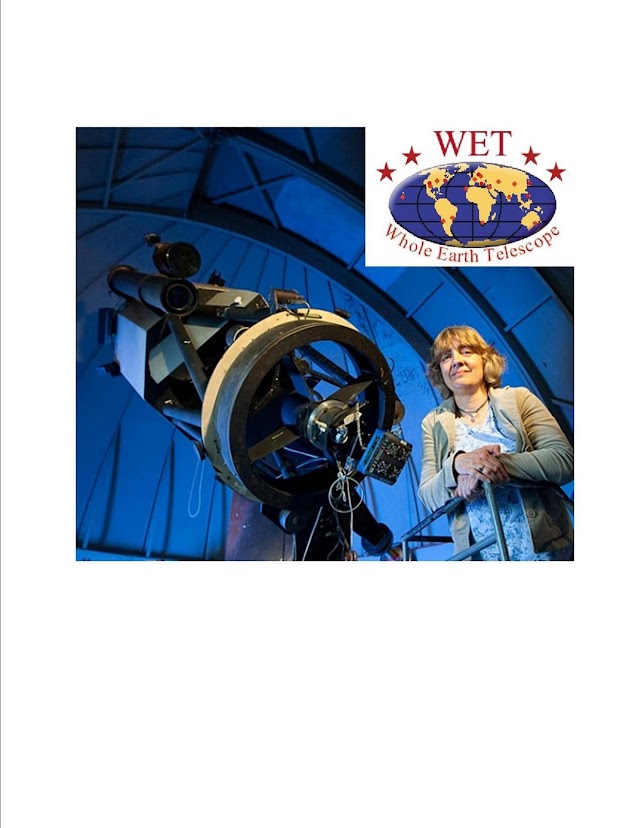March 13 - James and I went to West Park Place school to do a star
party for the 4th grade classes. James borrowed 4 portable Celestron
telescopes from the University. The night was pretty clear and
quite warm. Jupiter, Venus and Mars were all easy to find. There
were about 30 kids (plus quite a few parents:) there. They all
had a great time looking through the telescopes. Everyone loved
Jupiter with its moons, and you could see the polar cap on Mars.
Judi Provencal
- Judi Provencal
- B.A., Smith College, 1987 M.A., Astronomy, The University of Texas, 1990 Ph.D., Astronomy, The University of Texas, 1994 2005-present: Director, Delaware Asteroseismic Research Center 2005-present: Director, Whole Earth Telescope 2000-present: Resident Astronomer, Mt. Cuba Observatory and the University of Delaware
Thursday, March 29, 2012
Thursday, March 15, 2012
DARC News, future plans, WET workshop in 2013
Hello everyone, It has been a while since I've sent around an update. Here's a summary of what has been going on.... XCOV28 - this run holds the record for the number of targets covered! We got good coverage for all of our targets. For the DAs: the HS0507 FT is excellent (see attached). The data set spans over 37 days. HL Tau 76 also received good coverage, especially at the end of the run. Its total light curve is also over a month long. We switched to G191-16 towards the end of the run. This star is a multiperiodic pulsator. All three stars are excellent candidates for light curve fitting. G132-16 is one of the hotter pulsators we've looked at (12600 K). We are hoping to use this star, with G117-B15A, to pin down convection on the hot end of the instability strip. Finally, my personal favorite for this run was BPM31594. This star is dominated by a main mode with a series of harmonics, plus power near, but not precisely at, the subharmonics. It is also an excellent candidate for light curve fitting. For the DBs: we obtained excellent coverage of EC04207. This star is dominated by a single mode with harmonics. EC05221 turned out to be an unstable pulsator, alot like R808. The more data we added to its light curve, the lower the FT amplitudes became. We should definitely re-observe this star at some point to see if it characteristics change. This run promises to add multiple new points to our map of convection across both the DA and DB instability strips. I have nearly finished with the referee report on the EC14012-1446 paper. The report was very positive, with helpful suggestions. I'm planning on uploading he revised version in a few days. If anyone has any acknowledgements to add, please send them to me. Future plans: we are planning a mini-campaign (DAMP05) for this spring. So far we have confirmed dates at Tubitak (April 19-28, May 10-12) and CTIO (May 7-16). Our suggested targets include GD165 and HS1531+7436. If anyone is interested in participating, let me know!! There are preliminary plans to hold the 8th WET Workshop in February 2013 in Beijing, hosted by the Beijing Normal University. It is very early in the planning process, so please let us know if you have any suggestions!! Cheers, Judi
Subscribe to:
Posts (Atom)

